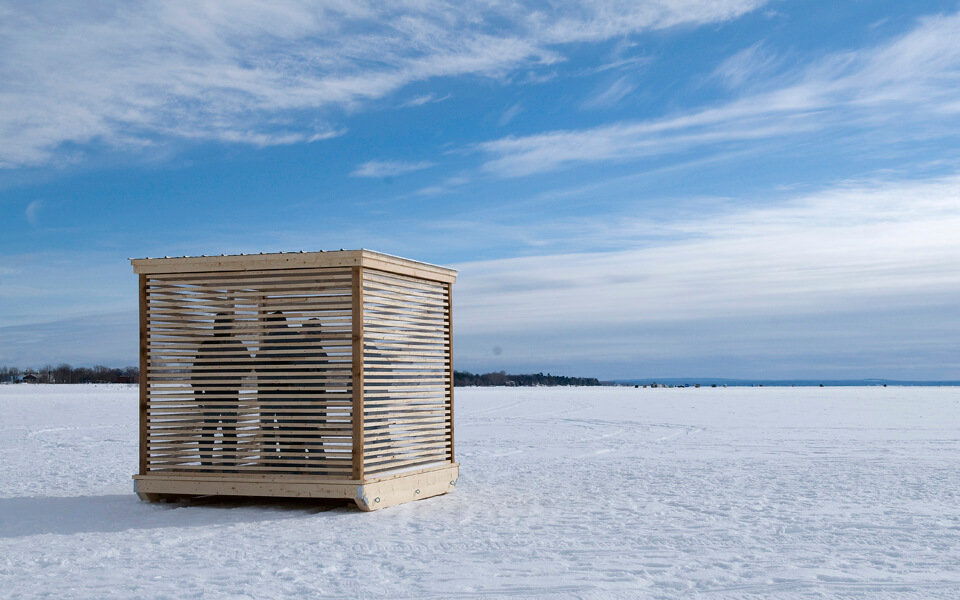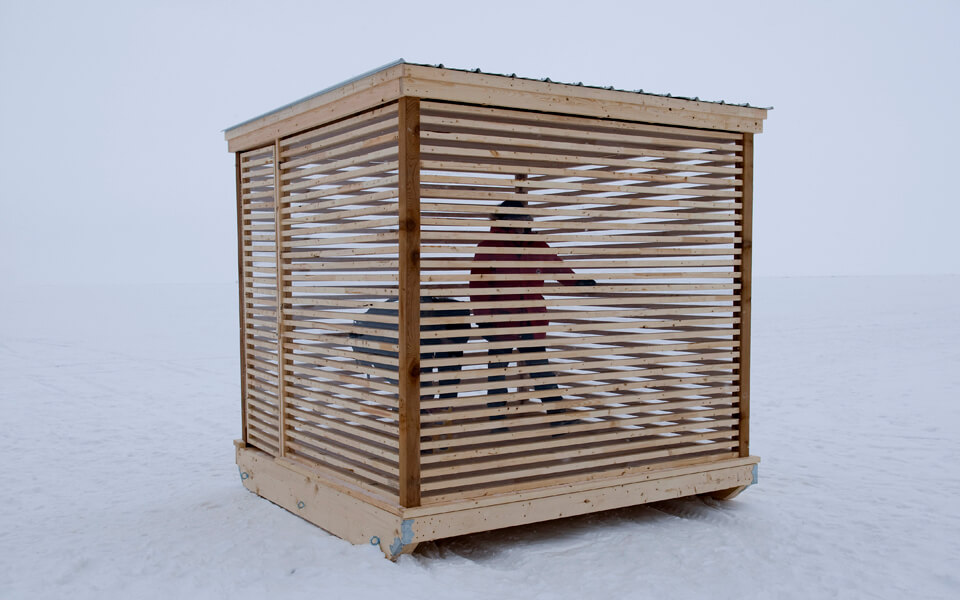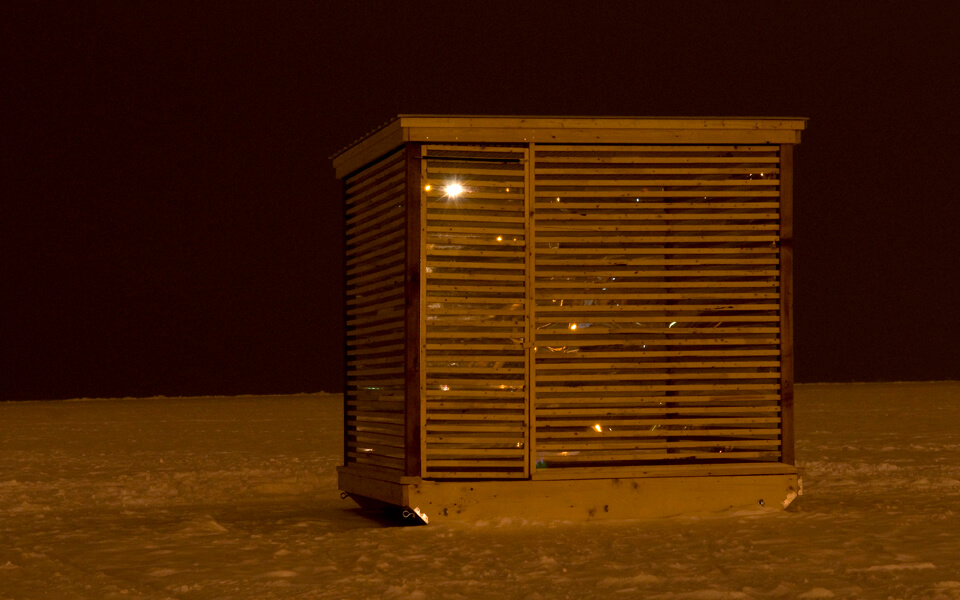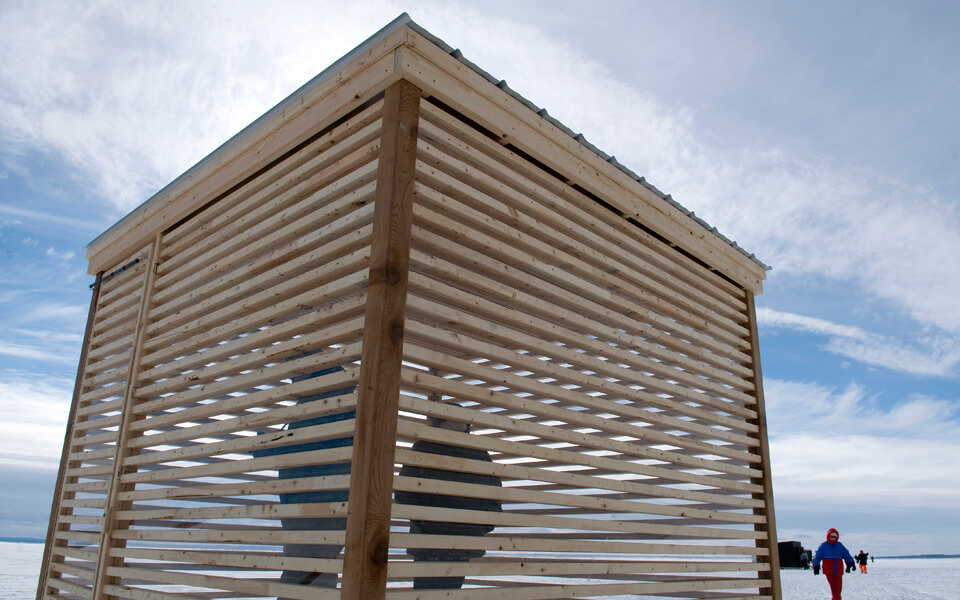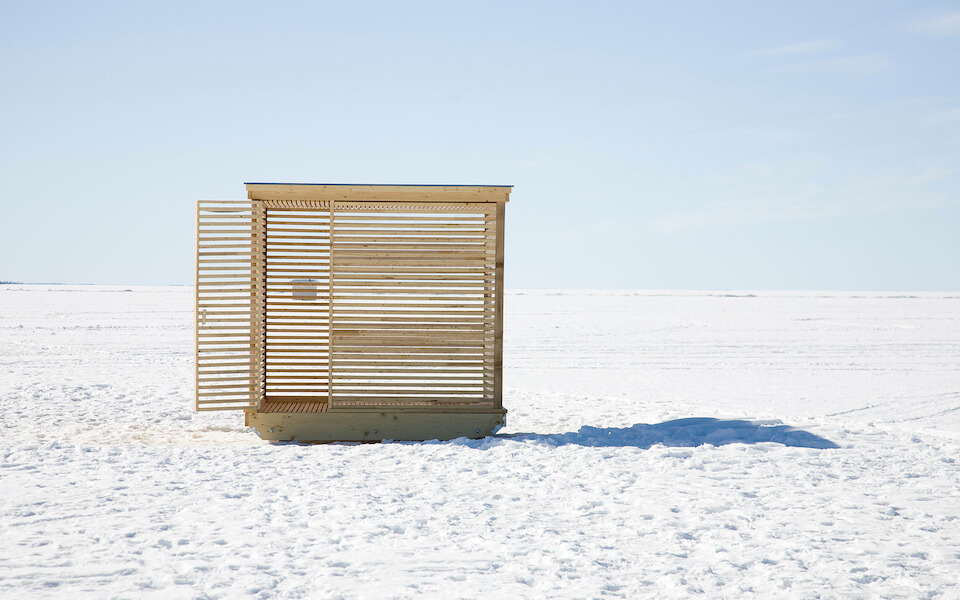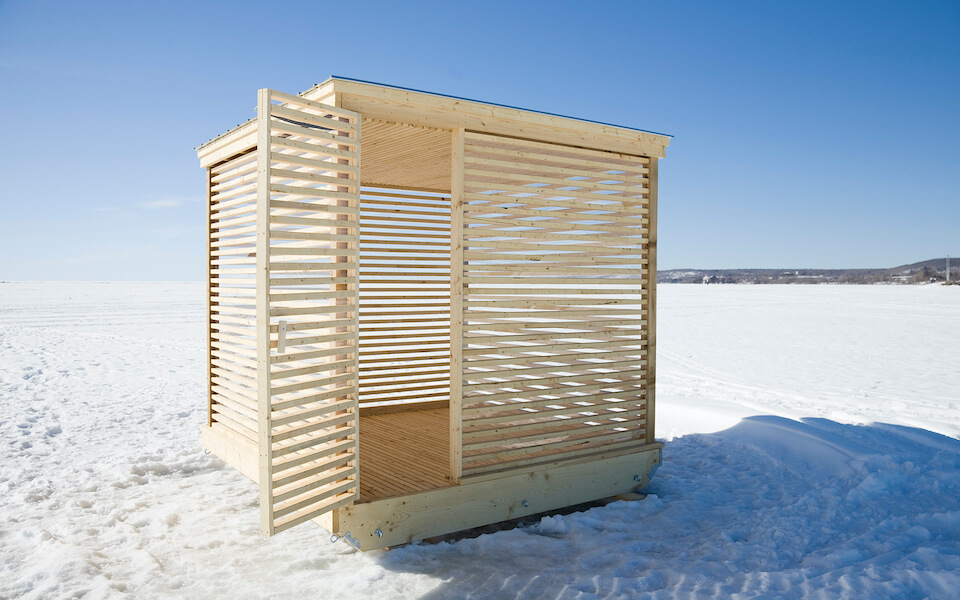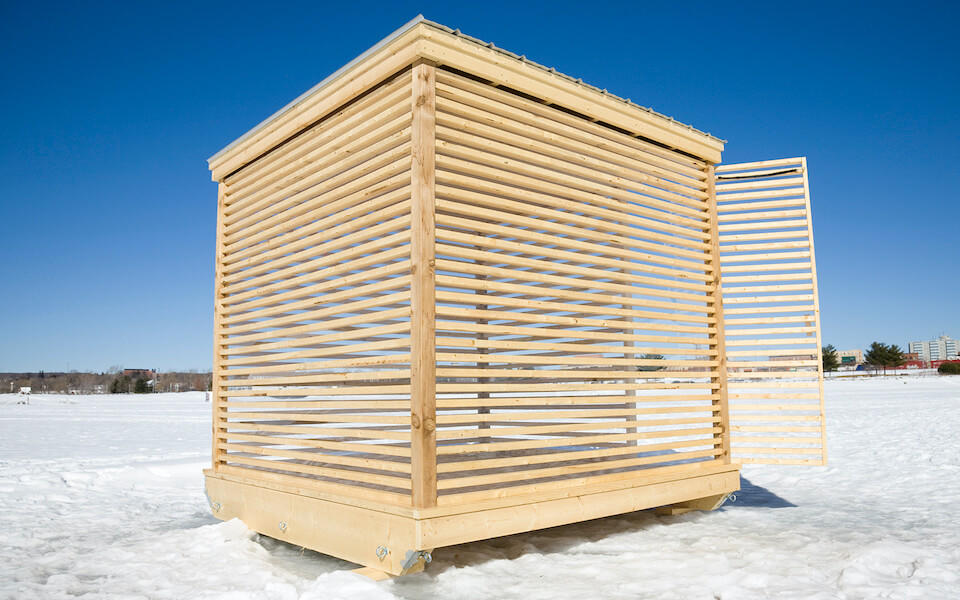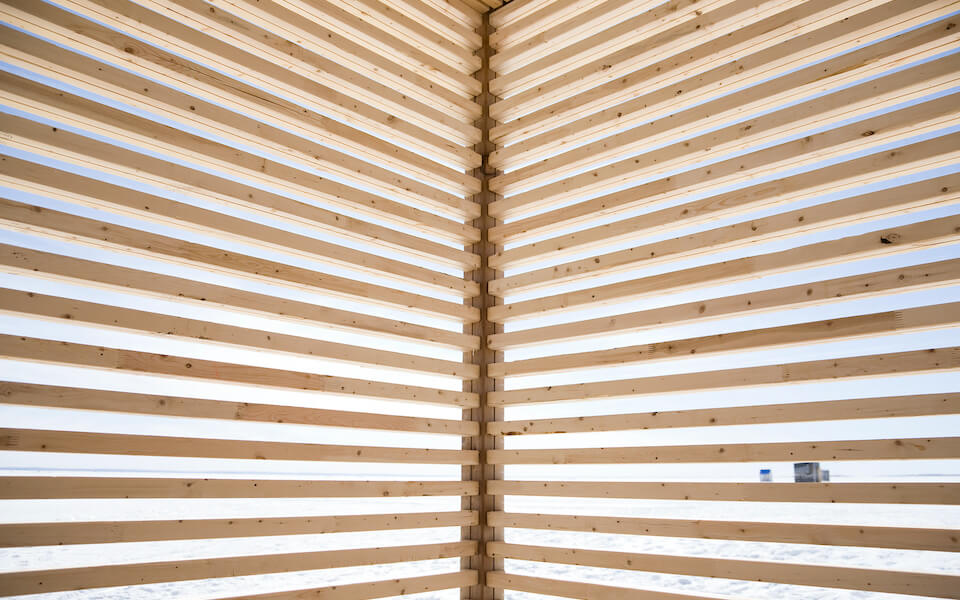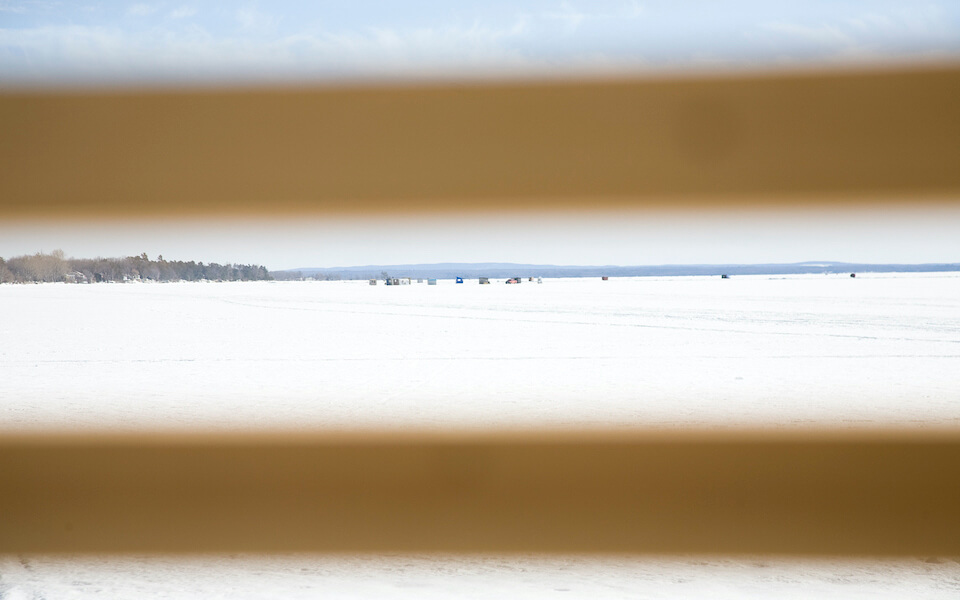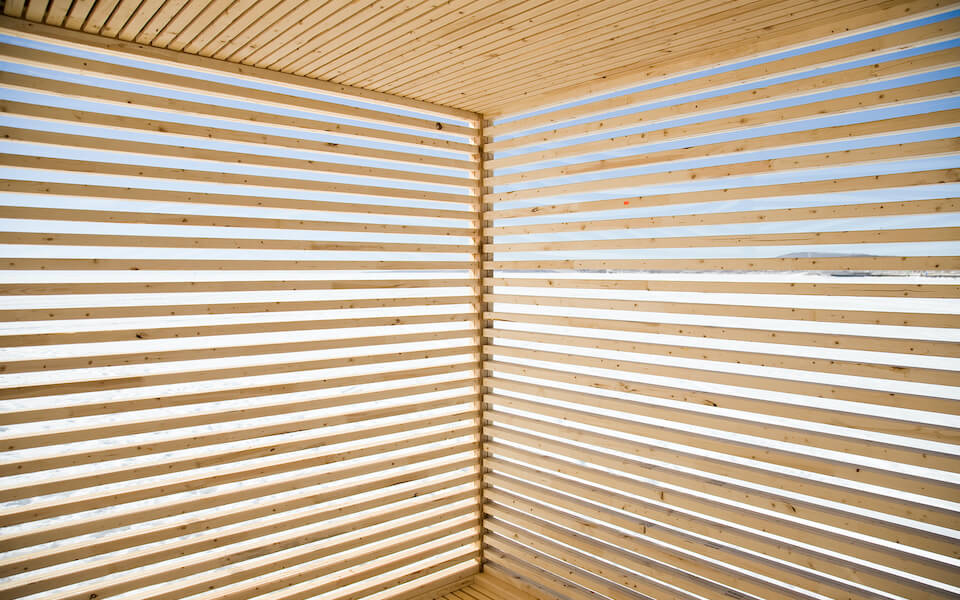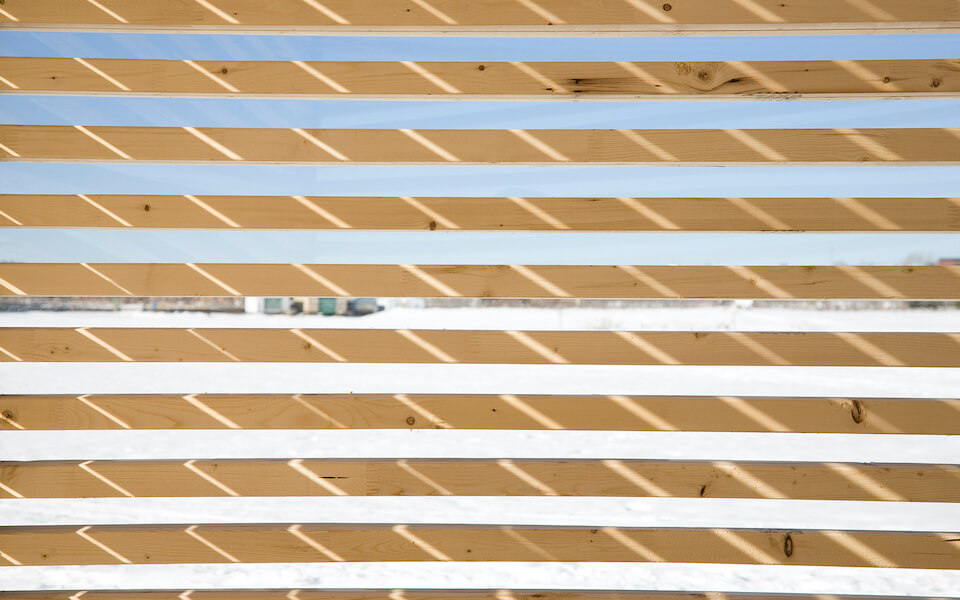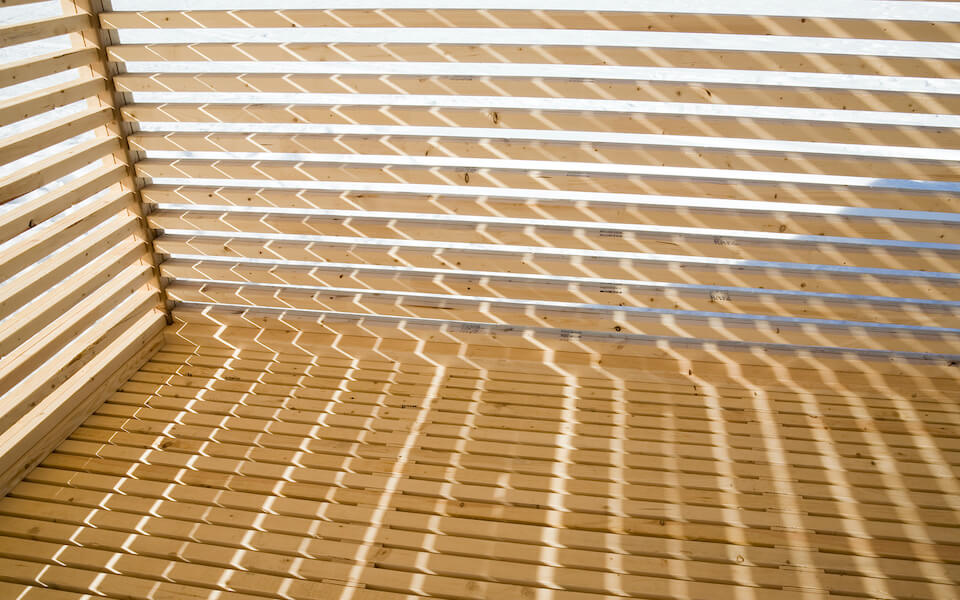Ice Follies 2010
February 14th - March 20th, 2010Steve Sopinka, Out[Side]In, 2010
Architecture, now more than ever, needs to be sustainable by default, ecological by necessity, and as a result, connect humans with their environment. This could be an architecture that reconnects people with the processes of nature that define their surroundings. This architecture could be less about what is inside and more about what is outside. Maybe everything is exposed – architecture and landscape – letting the architecture disappear and the landscape, the open frozen wind blown snowy expanse of frozen Lake Nipissing, filter inside.
There is always the possibility that architecture may be over-powered by such a sublime landscape. Perhaps the most successful architecture would somehow interpret the vastness of landscape, decipher it, translate it through the interface of the building which would transcend our perceptions of what we actually thought existed. Instead of seeing what we think we see, perhaps architecture could slow down perception, and enable us to see what we really see.
Can we learn more about a landscape through architecture? Can architecture enhance the interpretation of landscape?
The slat hut attempts to act as both filter and lens. The intention is to create a built form that dissolves into its surroundings – using architecture as a device – to allow the inhabitants to interact unobstructed with the immediate environment. It is a shelter that allows light to filter in through a layering or strata of solid and void. Horizontal sections of the structure are methodically peeled away to emphasize the distant horizon; an unmistakable reference point while orienting one’s self on the frozen lake. Its simplicity is a direct response to the seemingly endless frozen open expanse of ice and snow.
Within, you are aware of your surroundings – interacting with the immediate environment – yet connecting with the distant shoreline through framed views within the structural shell. It is in many ways an architecture that dissolves into the landscape and appreciates the willingness and force of climate and weather to fine tune any obstruction in its path. As the landscape appears through the architecture, likewise the architecture appears through landscape.
Artist Bio:
Steve Sopinka has spent most of his life in Ontario, but has lived and worked in the Yukon, the U.S, Asia, New Zealand, and Iceland. With a degree in Landscape Architecture from the University of Guelph and a Master in Architecture from the University of Toronto, his combined academic and professional experience has fostered a passion for design that is aligned with both architecture and the landscape beyond. Integrating building and construction experience, he has designed and built a variety of furniture, including a plywood chair that was featured in the Toronto Interior Design Show (2003).
Outside the conventional practice of architecture, his involvement in community-based design, various design charettes, competitions, as well as research on several different topics, have allowed him to engage in the design process at a variety of scales – within a variety of contexts. Interests in compact architecture, transparent landscapes, high quality, low- cost innovative designs, and northern architecture inspire his work He is published in On Site Review magazine (Spring 2009, Issue 21). He is currently living and working in North Bay Ontario where he has become intrigued with the culture of ice fishing and the resulting ad-hoc temporary shelters.
Image Gallery:
